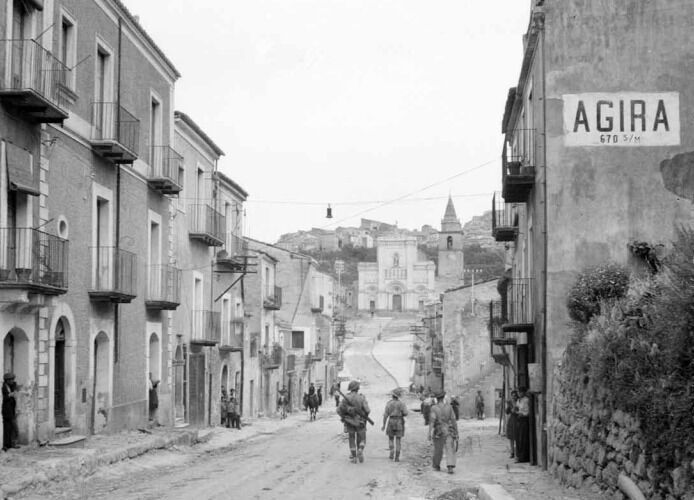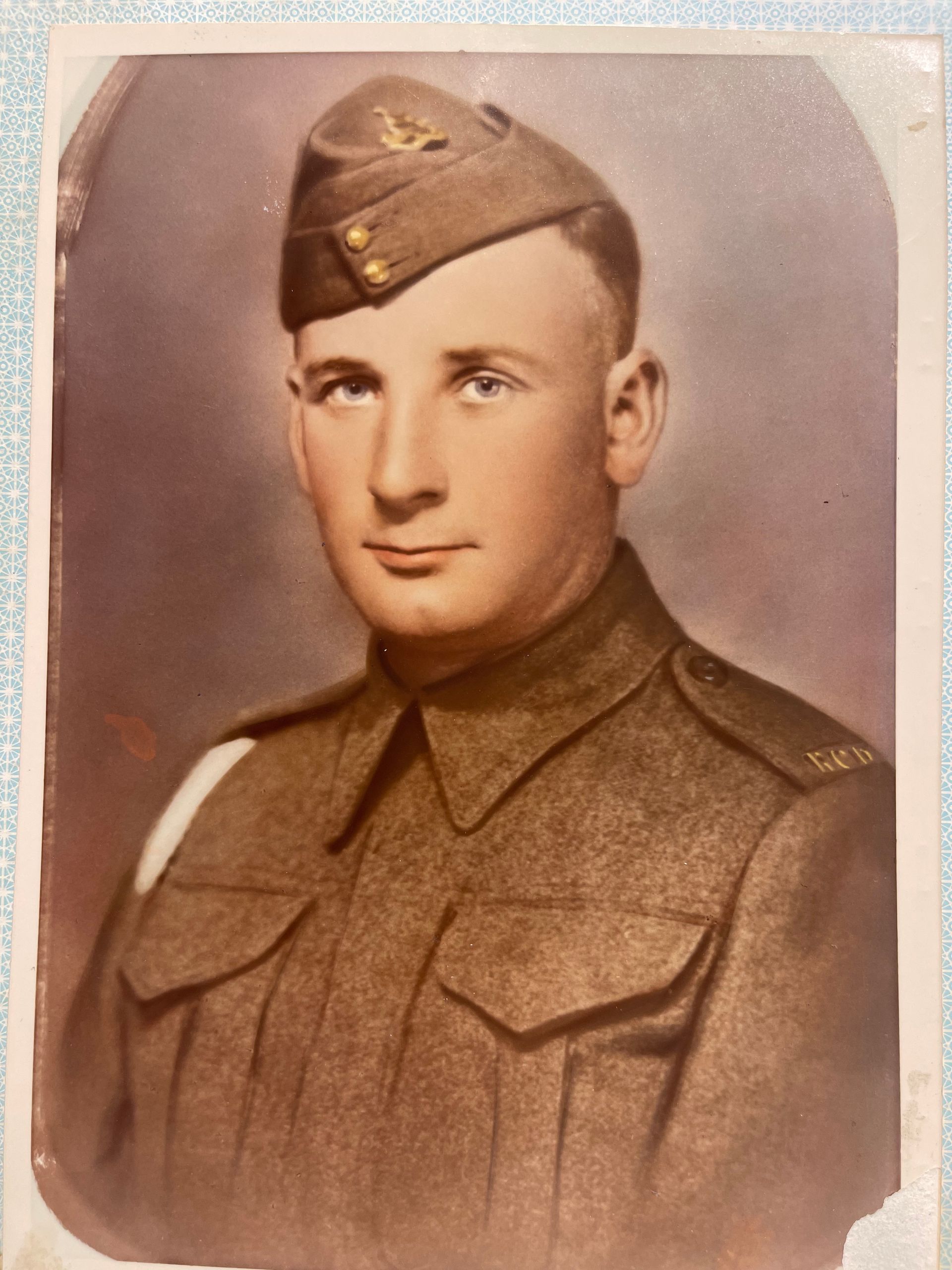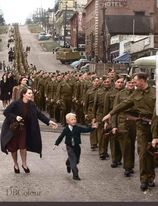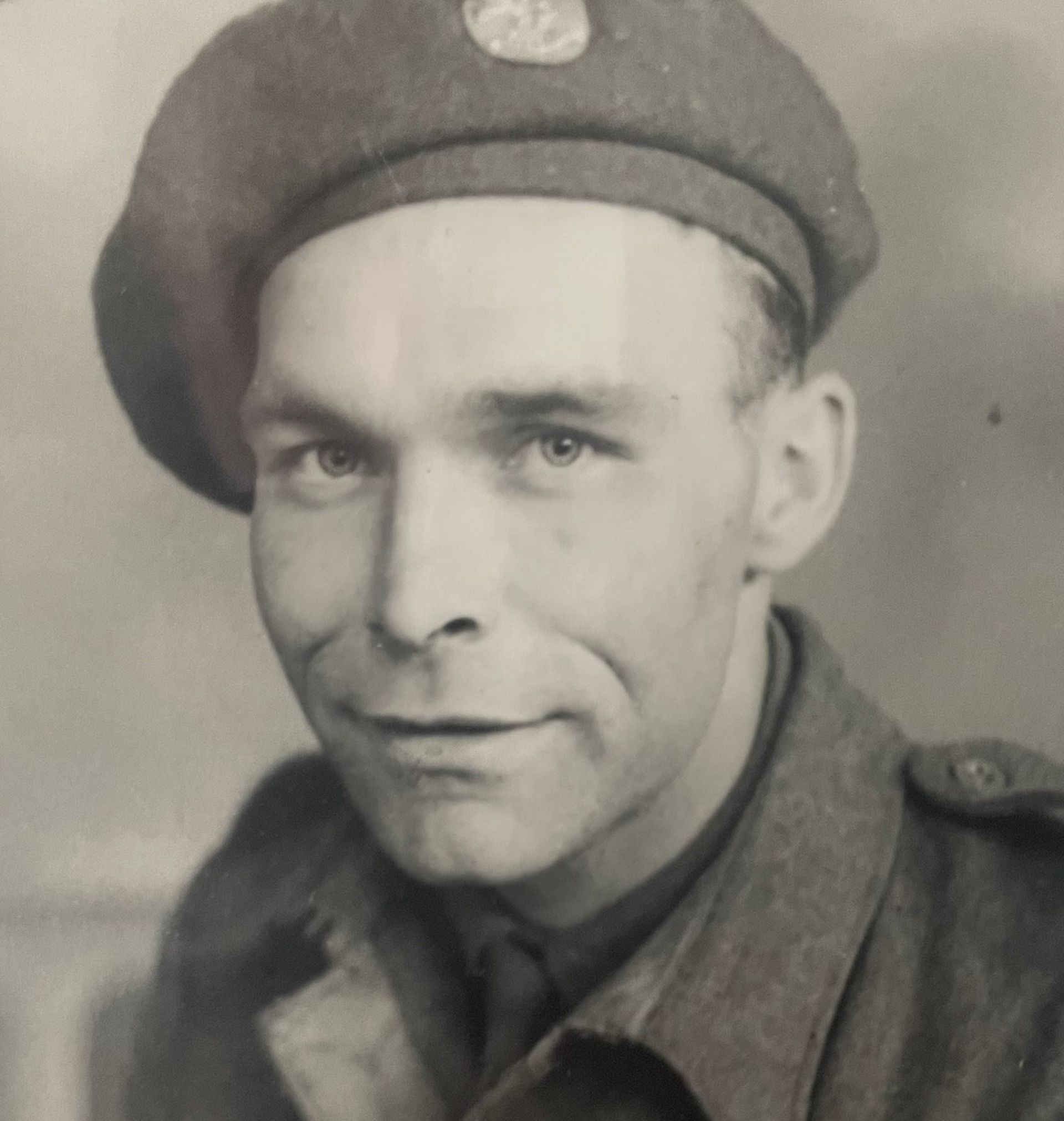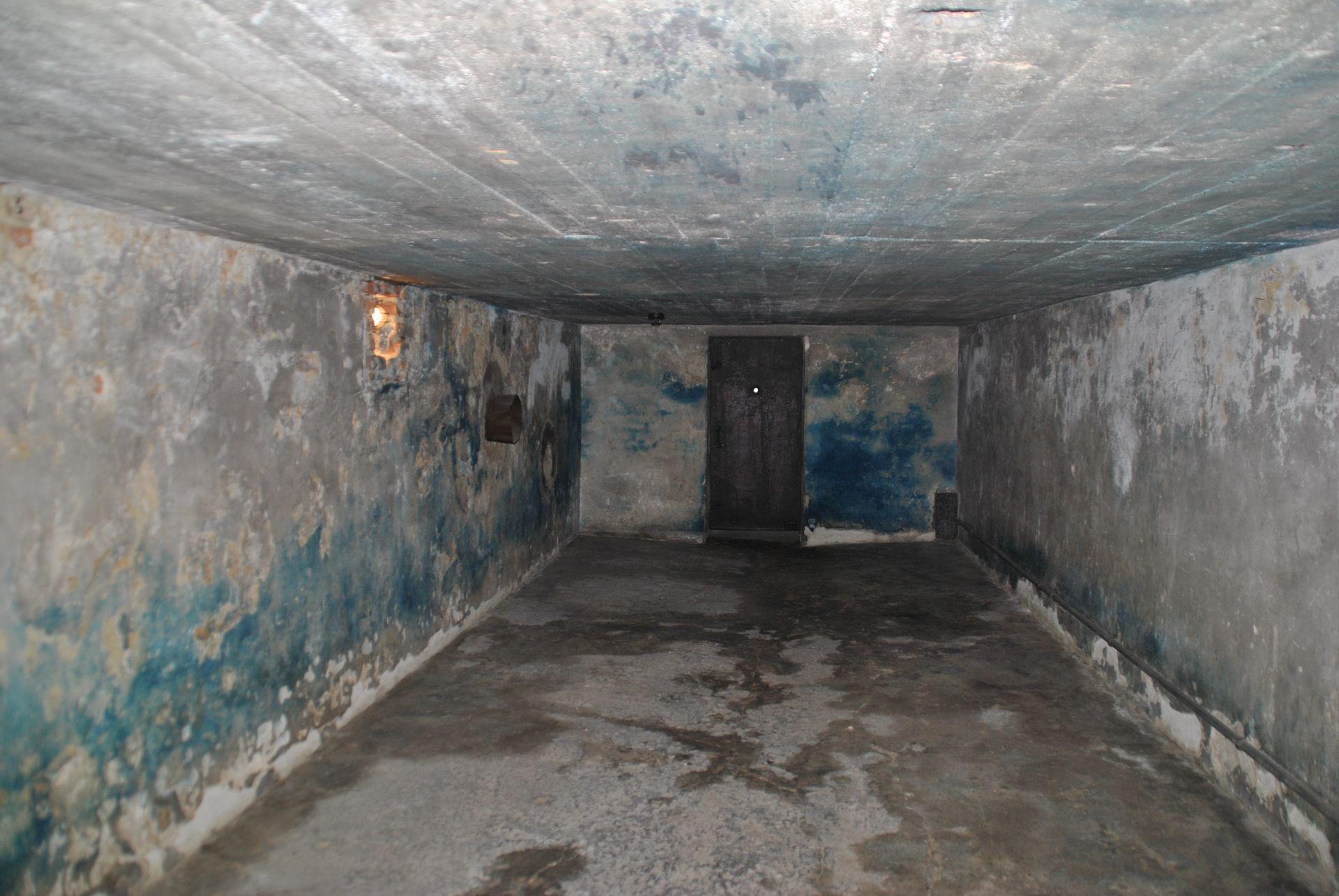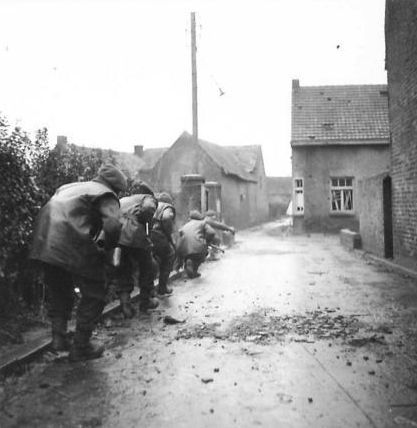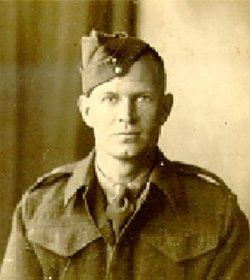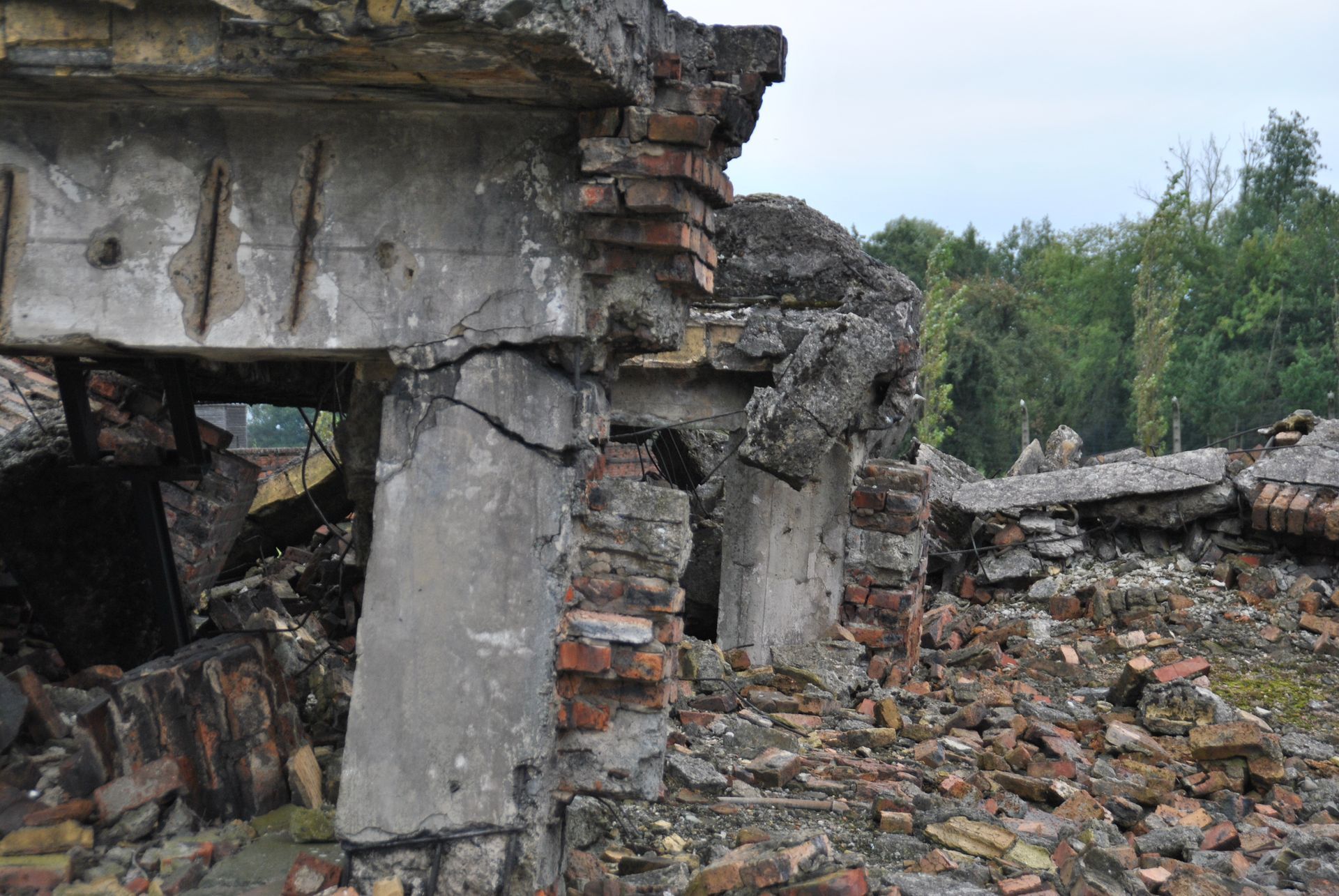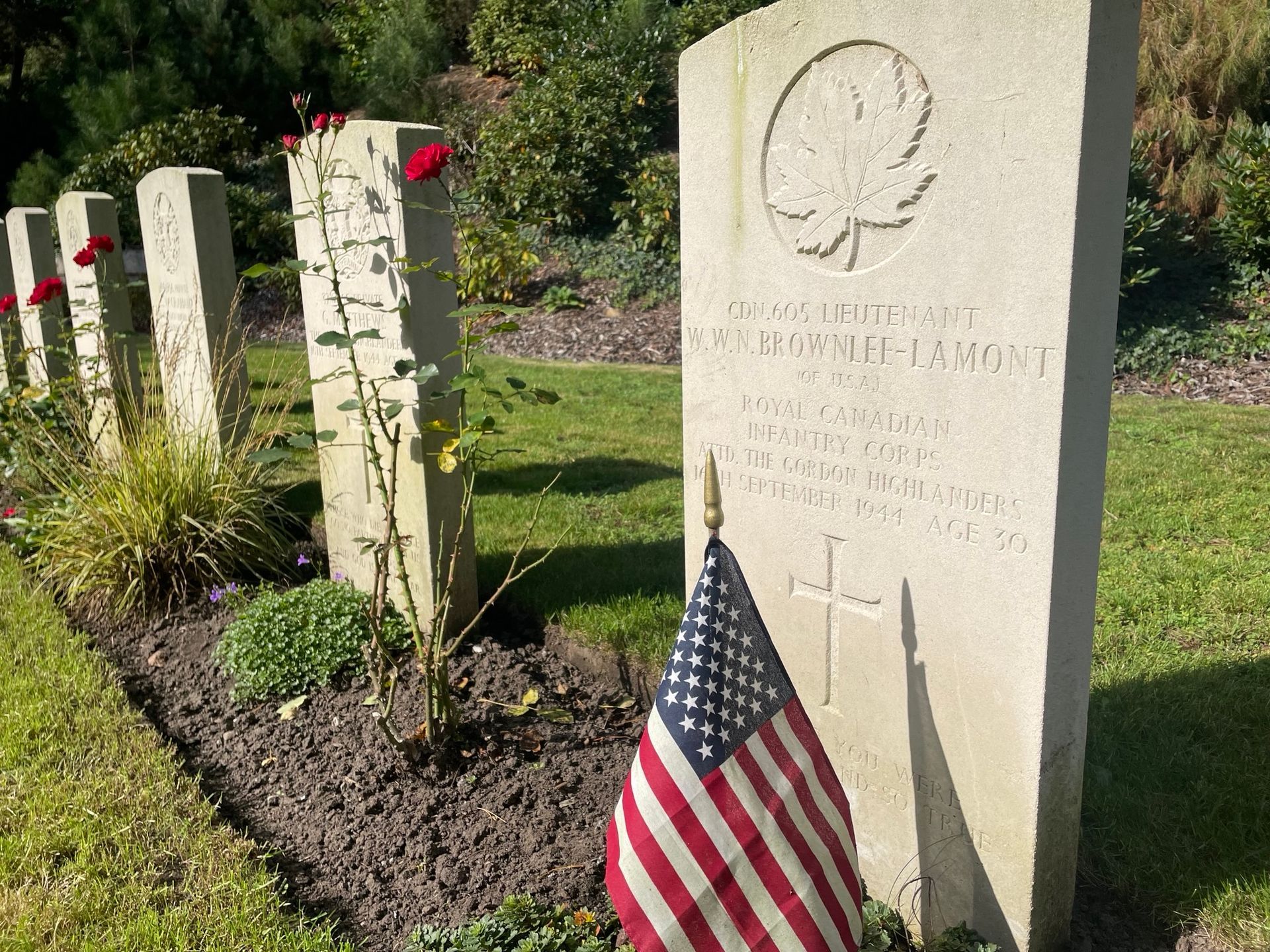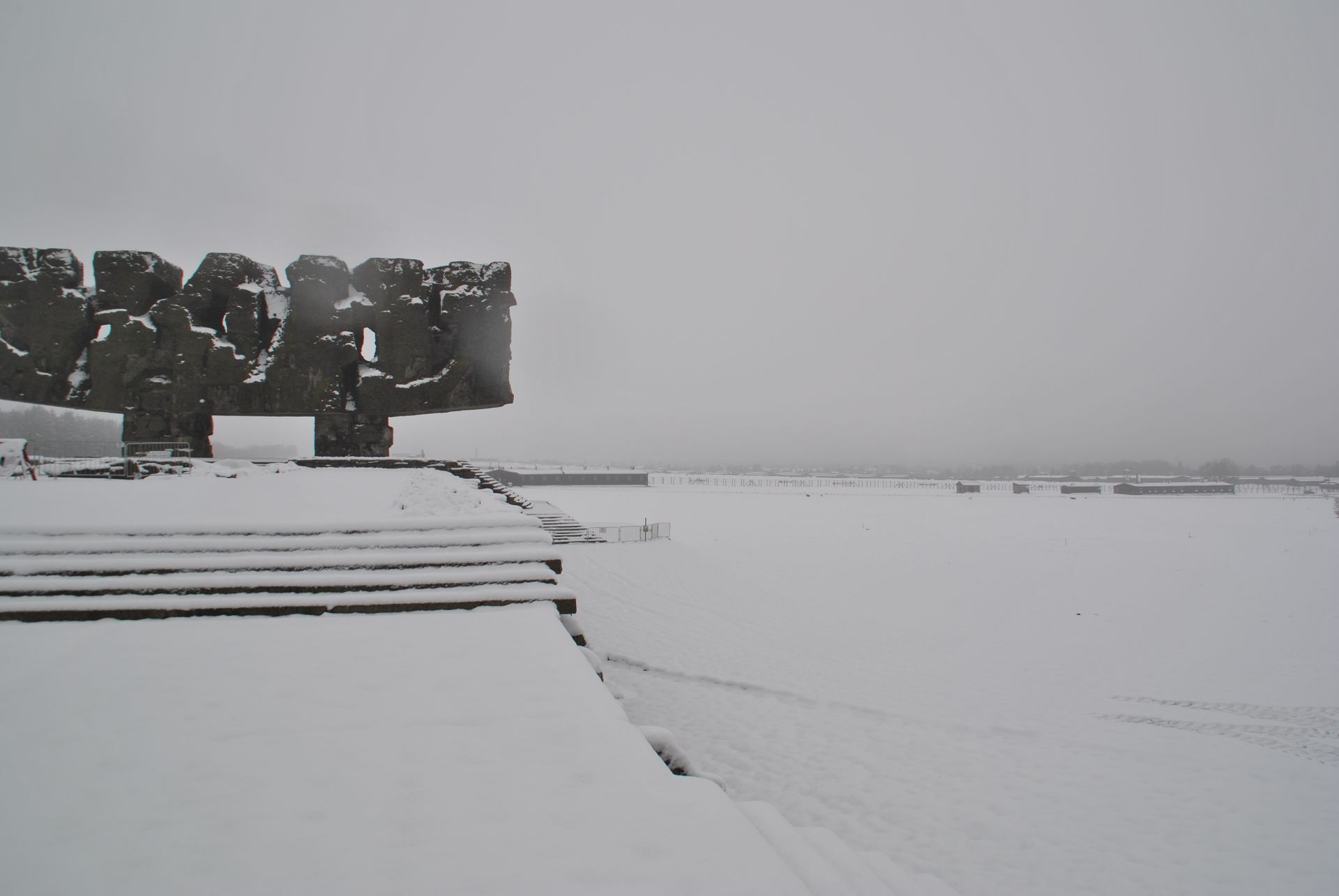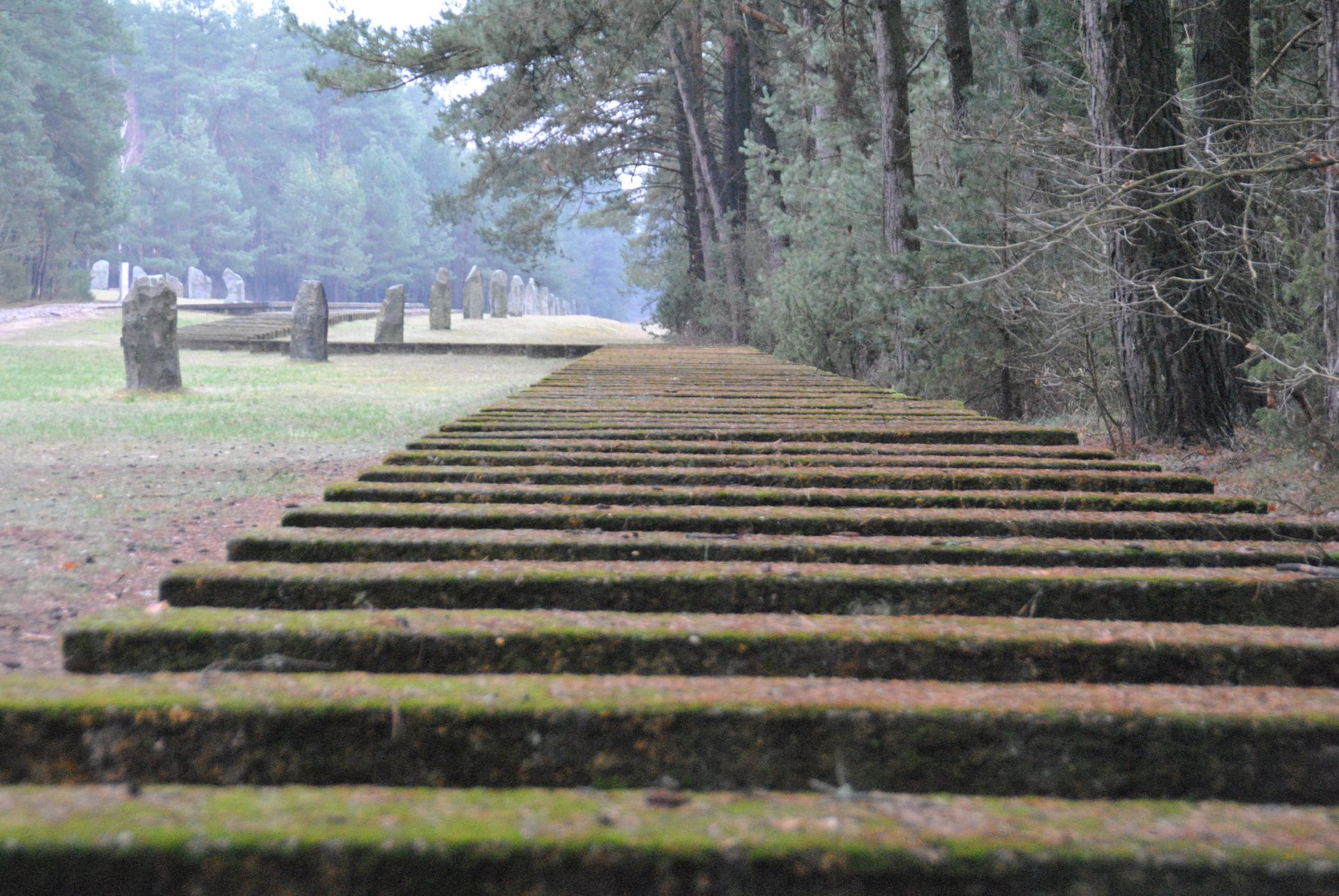The Ireland brothers in arms
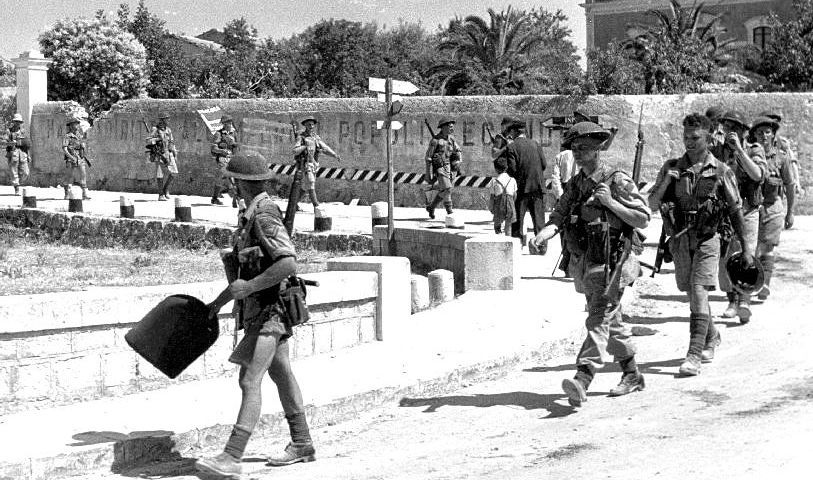
By Jimmy Hilgen
We all know the movie “Saving Private Ryan” based on true events about the four Ryan brothers of whom three were killed and the fourth had to be saved. A Hollywood classic, but many of these stories were in Canadian families throughout the Second World War where multiple brothers have been killed in action.
Also the story of the five Ireland brothers from High Prairie, Alberta. Their father DeCourcy Ireland was a World War I veteran. He lost his wife Mary in April 1938 and stayed behind with his five sons and two daughters. When the War broke out the “boys” all enlisted in the Canadian Army and only the oldest, Charlie who was already 40, stayed in Canada in the Currie Barracks in Calgary. His second son, James who was 39, served overseas with the Calgary Highlanders. His third son George (33), fourth son Thomas (30) and fifth son Frank (21) all served in the Loyal Edmonton Regiment.
George and Frank both enlisted on 6 April 1940 in High Prairie.
Operation Gauntlet
While staying in England during the war George, Thomas and Frank were part of Force III, the commando raid on the island of Spitzbergen where coal mines operated by Norway and the Soviet Union were active. Both Norway and the Soviet Union agreed the destruction of the mines and evacuation of the personnel from the mines. Also the infrastructure like the ports, equipment and weather station would be destroyed by the commando force to prevent it being taken by the Germans. This operation was called Operation Gauntlet and took place from 25 August 1941 until 3 September 1941. Operation Gauntlet was a complete success and all personnel (800) from the mines were rescued and all targets destroyed against zero casualties. The evacuation and destruction took 10 days in complete daylight as it doesn’t get dark in Summertime on this side of the World, but the Allied troops were not noticed by the Germans. George, Thomas and Frank were all part of this Operation which was a combined operation from Canadian, British and Norwegian troops.

Infantrymen of The Edmonton Regiment taking part in Operation GAUNTLET landing at Barentsberg, Spitsbergen, 25 August 1941
Operation Husky and the advance in Sicily
After returning to England the long waiting and training began again. Until June 1943 came and George, Thomas and Frank had to embark for a new destination. They didn’t know where they were heading and many options were mentioned. Eventually it became obvious that they would head to the Mediterranean where they had to take part in Operation Husky, the landings in Sicily.
On 10 July 1943 all three landed on the shores of Beach 57 on Sugar Green beach between Pachino and Ispica. Besides a man falling into the sea when embarking their landing craft and some men with seasickness the landing went without incidents. The man in the sea only got a wet uniform and was rescued. Sugar Green beach was a scene of orderly confusion and the units quickly organized and went inland against little opposition. In the afternoon the Loyal Edmontons had a brief skirmish with Italian soldiers and after a short burst of the Bren guns 35 Italians surrendered.
The next day the boys with the Loyal Eddies got the order to take the town of Ispica. After a long and tiring march in the boiling Sun Ispica was taken without any opposition. A considerable number of prisoners surrendered during the night and the Battalion moved outside of the town in a defensive position.
During this time the recovery was made of three Italian trucks. The transportation situation was serious due to the sinking of the ship on which the Loyal Eddies’ transport was loaded. Especially George who was the driver of Jack Birmingham´s mortar platoon was in need of transportation.
The war diarist noted that it was a fortune that the town of Ispica capitulated without fire as it would have been a costly operation to have taken it by force. The high cliffs made the town impregnable. The only difficulties the Loyal Eddies encountered were enthusiastic greetings of the civilian population and the frantic endeavours of the military population to surrender.
The Loyal Eddies went through towns where they have never heard of before: Modica, Ragusa, Grammichele and Caltagirone. On 16 July 1943 Frank got seriously wounded when they were approaching another of those towns: Piazza Armerina.
At about five kilometres south of Piazza Armerina a smoke signal was seen from a house on a hillside. Investigation revealed nothing, but when the advance was continued the first action of Canadian troops against the main German rearguard commenced.
Three German machine guns opened fire and a crater was blown in the road ahead of them. A recce was made but very accurate mortar fire was laid down on the road which halted the column. From the high features around town 88mm guns also opened fire on the Canadians. Their own artillery was too far back and only the 3'' mortars and anti-tank guns were brought forward. One of the anti-tank guns managed to take out a German machine gun position and another 6 pounder was taken out of action. During this attack four men were wounded by mortar fire. Frank was one of the wounded with a gunshot wound in the hip, buttock and right arm. He was transported to a field dressing station and later to a hospital where he stayed until October 1943 and he rejoined the Loyal Eddies in November 1943.
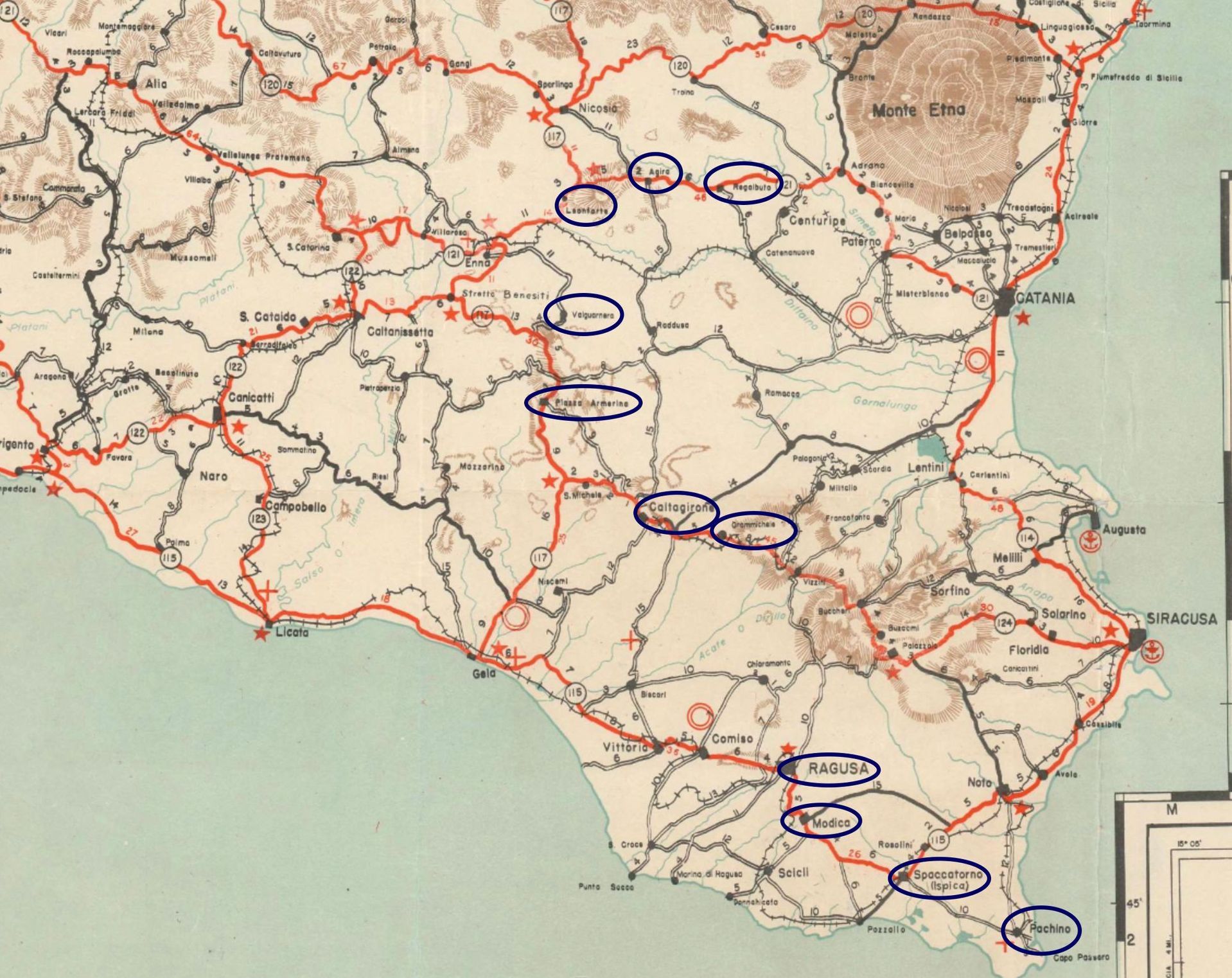
The Lost Battalion
George and Thomas were still with the regiment and were involved in the capture of Valguarnera and also in the Battle for Leonforte which took place on 21 and 22 July 1943. Here two platoons of C-Company and one platoon from D-Company were cut off from the rest of the Battalion and the fear of the headquarters of the Loyal Eddies was that they were annihilated. The buildings held by the Loyal Eddies were fortified and it took the Germans some time to locate the exact spot of the fortification. They sent a single tank quickly followed by others and started shelling the buildings the Canadians were in. Signallers tried to get in contact with Battalion Headquarters by going to the rooftops, but without luck.
The Loyal Eddies kept their positions during the night, but in the morning it became clear that without support they couldn’t hold their position. Lieutenant Colonel Jefferson, who was also in these buildings wanted to ask for help and out of nowhere young Antonio Guissepi appeared. Lieutenant Colonel Jefferson gave little Antonio all the money he had and wrote a note which he asked the little boy to bring to Brigadier Vokes. Antonio disappeared in the night and was later picked up by a Canadian patrol and was brought to Brigadier Vokes who felt his heart leap when he read that the men were still alive.
During the night of the 21st of July the Sappers of the Royal Canadian Engineers' 3rd Field Company managed to build a Bailey Bridge across the gully which the Loyal Eddies had to take on the 20th of July. The bridge itself was blown by the enemy.
A force consisting out of one troop of tanks, 90th Anti-Tank Battalion and 1 platoon of C-Coy and one of Battalion HQ of the PPCLI mounted on quads of the 90th Anti-Tank Battalion went through Leonforte. They relieved the cut off Loyal Eddies, consisting of around 30 men of all ranks in centre of town, at 09.30 hours in the morning. The Loyal Eddies were completely out of contact with the rest of the Battalion. Machine guns from the Brigade Support Group (Saskatoon Light Infantry) provided covering fire against snipers from the escarpment on the east side of town. The relieve of the Loyal Edmontons was a complete success and three enemy tanks in town were brewed up. The men from C-Coy then pushed forward through town against stiff opposition and occupied the area around the railway station. The C-Coy of the PPCLI was the counter attack Company for the Battalion and were placed under Loyal Edmonton command. A and B-Companies of the PPCLI moved forward mounted on Shermans.
It is very likely that both George and Thomas were part of either the platoons encircled in Leonforte or with the relieve party.
After the Battle for Leonforte was over the Loyal Eddies stayed in the area around the town itself and took over positions from other Regiments who were fighting the enemy near Nissoria.
Agira
On 27 July 1943 the Loyal Eddies were back in action again and they had to take the strategic town of Agira. At 18.30 hours the Loyal Edmonton Regiment came through the Seaforths positions and advance towards Agira.
At 19.00 hours the Seaforths had time for some tea and a smoke but were still shelled and fired upon with mortars and machine guns. They remained on the southern side of the road towards Agira.
B and D-Coys of the Loyal Eddies attacked Cemetery Hill but met heavy opposition encountered by both Companies. The enemy were in possession of mortars, machine guns, rifle grenades and hand grenades. Close counter fighting ensued and it was not until the enemy were engaged with the bayonet that the situation began to clarify itself. Heavy fighting resulted in the complete capture of the hill.
Major William Gledstanes Bury, OC of D-Coy was killed by mortar fire and three officers, Captain Gilchrist and Lieutenants Turner and Saville were wounded.
A-Coy were engaging at close range at Monte Caprilzza and covering the road approaching from the east towards Agira. The Regiment were then ordered to hold ground and they were relieved the next day by the Princess Patricia’s Canadian Light Infantry.
Salso Valley
After four days of rest and relaxing at Cemetery Hill where George, Thomas and the Loyal Eddies were treated on a cloud burst which saw all ranks joyously stripping to take the pelting downpour on the bare skins, another operation was about to start. This time the operation would be on Battalion scale and the Eddies got the tough task to take the rough terrain northeast of Agira and north of Regalbuto.
The Loyal Edmonton Regiment made a couple of recce patrols through the night. One under Lieutenant Swan and under Sergeant Robertson of C-Coy. They were sent out to recce the Salso River Valley and Point 736 if there were enemy troops dug in there. They reported that there were no enemy troops, but that the trails were unusable for vehicles. They took the dry riverbed of the Salso River where no vehicles could proceed.
They received orders to take Point 736 to the north of Regalbuto under the cover of darkness.
During the afternoon a large number of mules were collected with pack saddles for ammunition, heavy weapons, rations and water. The whole party of mules took off around midnight towards Point 736.
The next day the Regiment moved into the Salso Valley north of Agira and Regalbuto. The troops moved forward without incidents, but their advance was slowed down several times when enemy aircraft dropped flares lighting up the countryside. Combined with the difficult terrain progress was slow.
A and B-Coys were ordered to move forward and seize a high ground in the Salso Valley. They came under very heavy mortar and machine gun fire. Both Companies held their positions for the remainder of the day and were taking shelter under rocks and cliffs. There were no opportunities to dig slit trenches.
The enemy had occupied Point 736 and its approaches and defended it with a considerable force. Mule trains had difficulties to move forward due to shelling and were badly scattered. The machine gun platoon from the Saskatoon Light Infantry lost their machine guns as a result of the enemy shelling.
On the 3rd of August 1943 the Loyal Eddies were advancing through pretty rough terrain north of Agira and Regalbuto in the Salso Valley. This valley exists partly out of dry riverbed with rocks.
They sent out a recce which showed out that Point 736 could be more easily attacked from the southeast rather than the west. These moves took considerable time as care was taken to keep the enemy in complete ignorance of the change of plan.
The plan developed as a three-phase attack and at 23.30 hours C-Coy was ordered to take the first objective, Point 349.
The 3rd of August is also the day that George Ireland was mortally wounded which was most likely in the night from 2 on 3 August 1943 on Point 736. George was officially listed as died of wounds received in action, but he never made it to a hospital and most likely died in the Field Dressing Station. George served in No. 3 Platoon of the Support Company of the Loyal Eddies with Sergeant Jack Birmingham.
George was initially buried in a field grave near the Salso River and later reburied on Agira Canadian War Cemetery. That day the Eddies lost 10 men in total who were killed in action.
In the night of 4 on 5 August the regiment had difficulties in holding Point 736 which changed hands several times. They did manage to hold it eventually.
At 04.30 hours C-Coy captured the first objective in face of a considerable enemy opposition and spent the remainder of the day in consolidation and active patrolling. Ammunition, rations and water were sent up by mules.
A and B-Coys moved east along the Salso Valley and occupied a forming up position ready to attack Monte Revisotto.
The Loyal Edmonton Regiment's C-Coy attacked and captured its second objective in the morning, a high ground. The troops were exhausted and regiment was asked for fresh troops to continue the attack. Two platoons of D-Coy were sent forward.
Major Donald was the CO of C-Coy and made a plan to take Point 736 but found that the Forward Observing Officer (FOO) was unable to establish contact from a forward Observation Point (OP). Major Donald then directed the artillery fire himself.
At 16.30 hours two platoons of D-Coy under Lieutenants Christie and Dougan attacked and successfully drove the enemy from the feature. Lieutenant Christie was killed while Lieutenant Dougan was wounded. Their seconds in command, Sergeant Hammell and Sergeant McEwan were also killed. C-Coy rushed up to consolidate what was gained.
On the Monte Revisotto front A and B-Coys attacked and got well forward but met heavy opposition being halted on the slopes of feature 333. Their ammunition was running low and the opposition was considerable. It was decided to hold them there an plan and attack supported by artillery
On 5 August Thomas Ireland was the only one still fighting for the regiment. Considering the fact that his brother George had died of wounds two days earlier must have made him more determined to fight the enemy forces. He was captured by the Germans during one of the counter attacks which were made by the enemy that day. It is unknown where the enemy had captured Thomas to, but it is certain that he survived the Second World War.
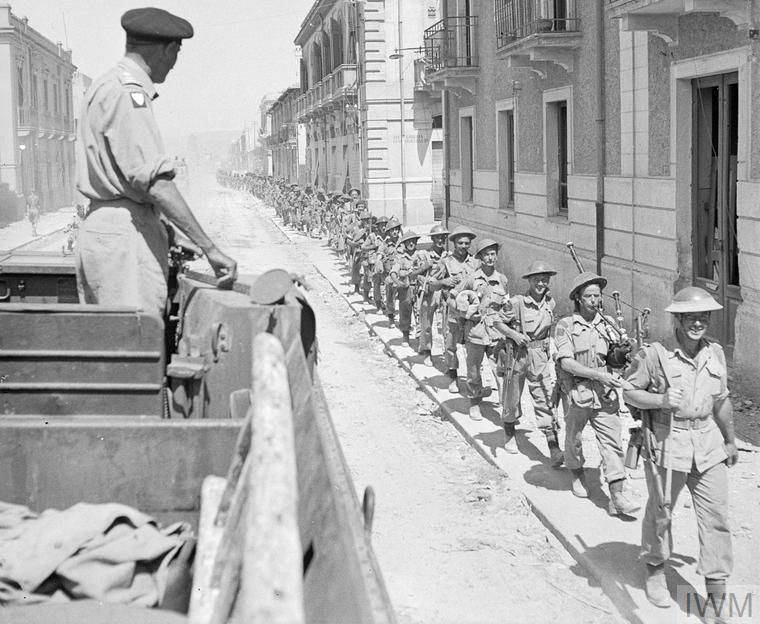
The Commander of the Eighth Army, Lieutenant General Sir Bernard Montgomery, watches troops (48th Highlanders) as they pass through the streets of Reggio
Operation Baytown and the advance in Italy
The 1st Canadian Infantry Division where the Loyal Edmonton Regiment belonged to got some rest after they were taken out of battle in Sicily, but this time without the three Ireland brothers. They were taken to places far away from cities and towns and got some relaxation and rest in the very hot Sicilian Summer. They went out for swims in the Mediterranean, but were also training for their next operations. Replacements were shipped in and the regiments were brought back to strength again.
On 3 September 1943 their next amphibious landing was planned; Operation Baytown. The Allied troops were landing on the Italian mainland near Reggio di Calabria. The 1st Canadian Infantry Division was part of the landings and encountered little resistance capturing all their objectives on the first day. From here the Canadians went up the Italian boot towards towns like Campobasso (Canada Town) and along the Adriatic Coast.

Personnel of The Loyal Edmonton Regiment digging out Lance-Corporal Roy Boyd, a comrade who was buried alive for 3 1/2 days in the wreckage of a demolished building, Ortona, Italy, 30 December 1943
Ortona
On 11 November 1943 Frank Ireland rejoined the active service force and was added to the Loyal Edmonton Regiment again. They went up to a town which was unknown to the Canadians; Ortona. This turned out to become Canada’s own Stalingrad, but under different conditions than on the Russian front. The Battle of Stalingrad in Russia was a bloody city war where literally every building was either a stronghold from the Russians or the Germans which had to be capture against a high loss. It was here that Frank became the second of the Ireland brothers who lost his live in the Second World War.
On 26 December 1943 the Loyal Eddies war diarist wrote the following about the Battle of Ortona:
“House to house fighting continues throughout the day. Tunnels, which the enemy were using to change positions quickly, were discovered by our forward platoons. These tunnels were quickly put out of use, the exits being blown up by our Pioneers. The enemy in his determination to stop our advance used a flame thrower again today but failed to accomplish his purpose. Several more city blocks of flats were cleared and occupied by our troops.
The 12 CTR (Three Rivers Regiment) lost two tanks in their support of us, one by a beehive and one knocked out by a 50 mm gun which was later destroyed. Anti-tank guns, 6 and 17 Pounders firing over open sights, were of great assistance in knocking down buildings occupied by the enemy. The Regiment now controls the entrances to "Cathedral" square, the third and last major city square.”
On the 27th of December, the day that Frank lost his life, the following was noted by the war diarist:
“One hundred reinforcements arrived during the night and the majority have been posted to re-form 'C' Coy in order that the regiment can operate on a four rifle coy basis. Captain P.G. Wright, who joined the battalion on 25 December 43, took over command of 'C' Coy. A large percentage of these new men have come from the Cape Breton Highlanders, the regiment which the Minister of National Defence, Colonel R.L. Ralston, commanded in the last war. 'C' Coy may now be called the "Bluenose Coy".
The enemy being unable to stop our daily advance attempted a new act of terror to discourage us from occupying buildings. Early this morning the Huns sent a small patrol out to determine our occupation of a building. This being established, the enemy returned to their own lines and in the matter of a very few minutes blew the building up. One Platoon consisting of one officer, Lieutenant E.B. Allen, and twenty-three men were trapped and buried in the rubble before they had a chance to make an escape. Not being satisfied the Hun continued to harass the area with grenades but this did not stop our Pioneers from continuing their efforts in an attempt to rescue the buried men.
By nightfall four men were rescued and evacuated and the body of one man was removed. In retaliation 'A' Coy blew up two buildings in which Germans were heard talking, in one of the buildings a Bosche Officer was issuing orders. The CO, Lieutenant Colonel J.C. Jefferson DSO ED, laid on an area shoot for our 3" Mortars which proved to be a field day 1100 High Explosive bombs being expended. Since we now control by fire the third city square, opposite the domed cathedral, the end of the battle is now in sight. The Hun has not many remaining buildings from which to manoeuvre or make a major stand.”
Frank was initially buried near the Communal Stadium of Ortona and later reburied at Moro River Canadian War Cemetery.
Below from left to right:
Frank Lawrence, Thomas William, George John, James Richard
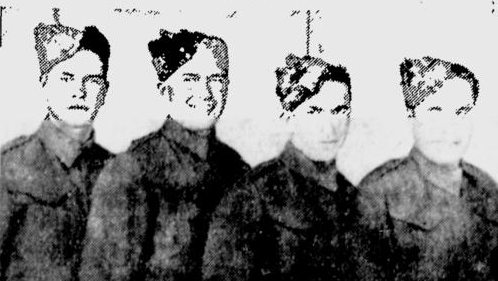
Sources:
- A city goes to war by Lieutenant Colonel G.R. Stevens OBE.
- Loyal Edmonton Regiment war diaries.
- Libraries and Archives of Canada (photos).
- Wikipedia.
- Ancestry.
- D-Day Dodgers Foundation.
Read about our journeys in our blogs
This is our Explore Diary




